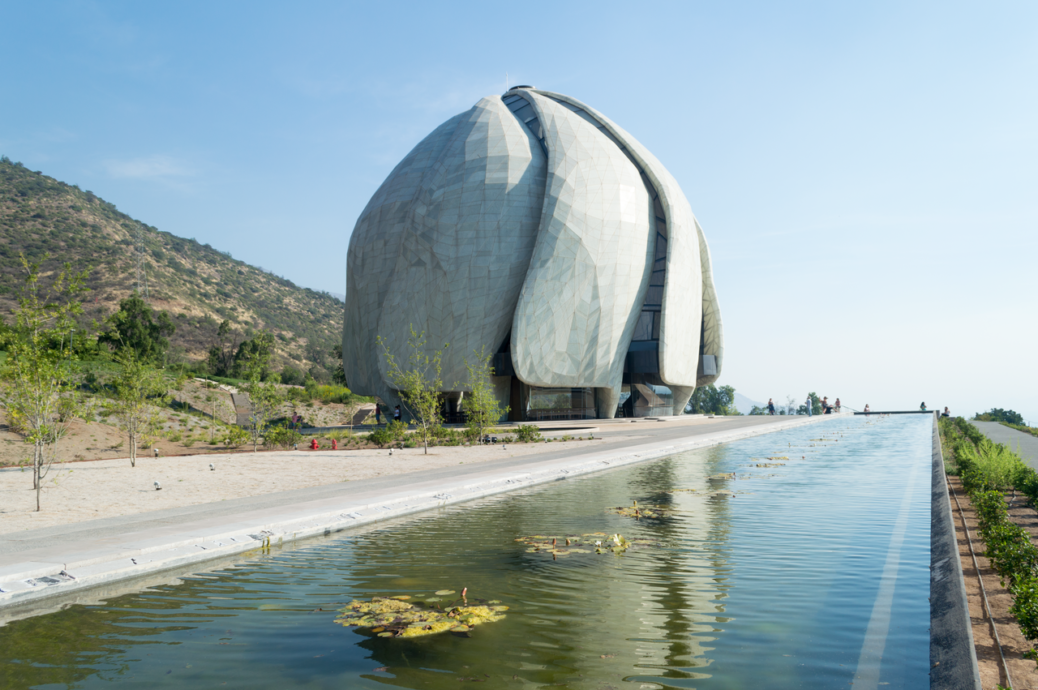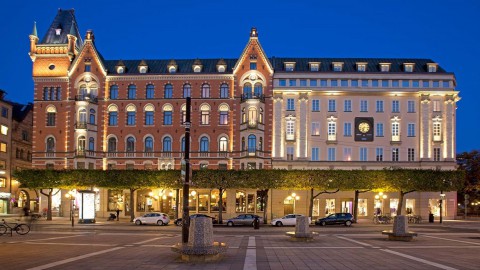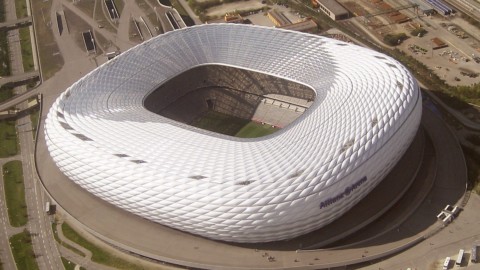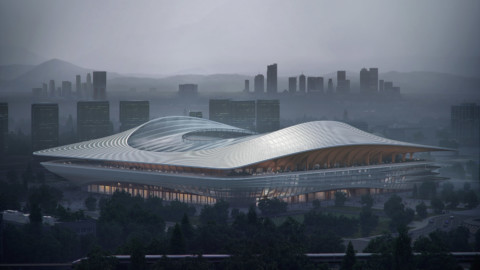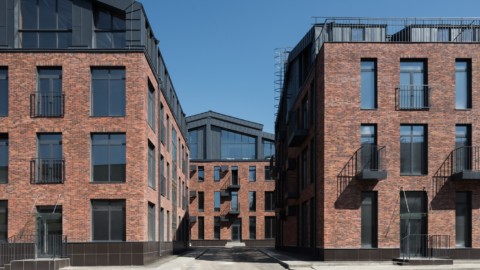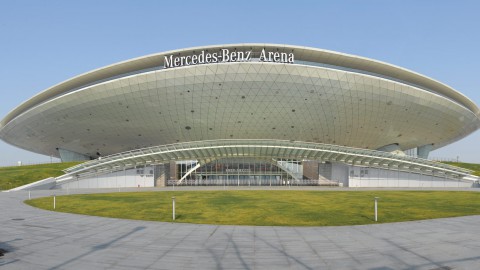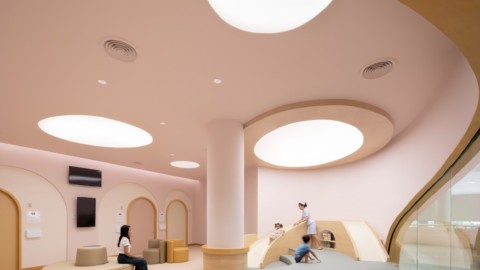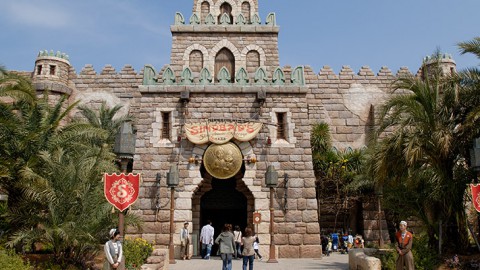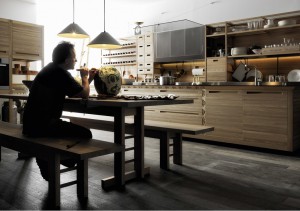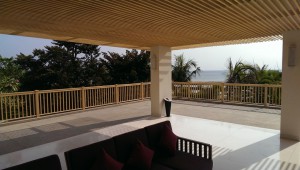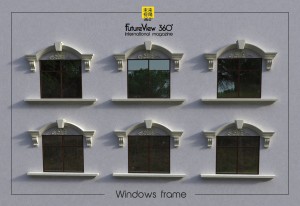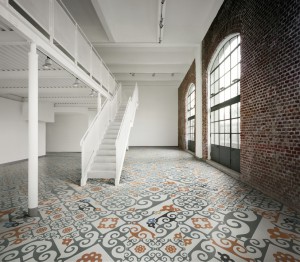Type:Bahá’í House of Worship
Location:Santiago, Chile
Completed:October 2016
Height:30 metres (98 ft)
Diameter:30 metres (98 ft)
Architect:Siamak Hariri
Seating capacity:600
類型:巴哈伊教堂
地點:智利聖地亞哥
已完成:2016年10月
高度:30米(98英尺)
直徑:30米(98英尺)
建築師:Siamak Hariri
座位數:600
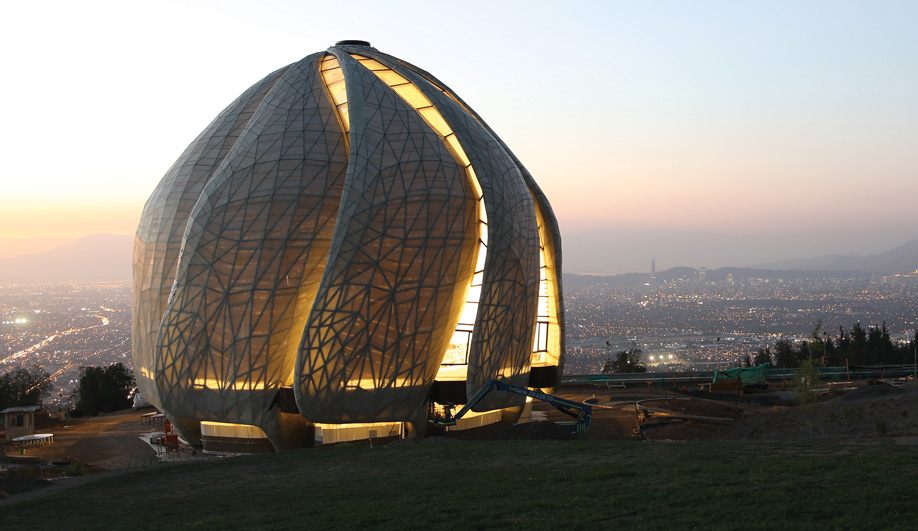
The Santiago Bahá’í House of Worship or Santiago Bahá’í Temple is a Bahá’í House of Worship located in Santiago, Chile and opened in 2016. It is circular and composed of nine arched “sails” made from marble and cast glass. Like all Bahá’í Houses of Worship, it is open to all regardless of religion or any other distinction. The temple was designed by Canadian architect Siamak Hariri and has won several awards from Canadian and international architecture organizations.
SantiagoBahá’í禮拜堂或SantiagoBahá’íTemple是位於智利聖地亞哥的Bahá’í禮拜堂,於2016年開放。它是圓形的,由九個由大理石和鑄玻璃製成的拱形“帆”組成。 像所有巴哈伊教堂一樣,它對所有人開放,不論其宗教信仰或其他任何區別。 該寺廟由加拿大建築師Siamak Hariri設計,並贏得了加拿大和國際建築組織的多項殊榮。
How Chile’s Bahá’í Temple Uses High Technology to Create a Spiritual Space|智利的巴哈伊神廟如何利用高科技創造精神空間
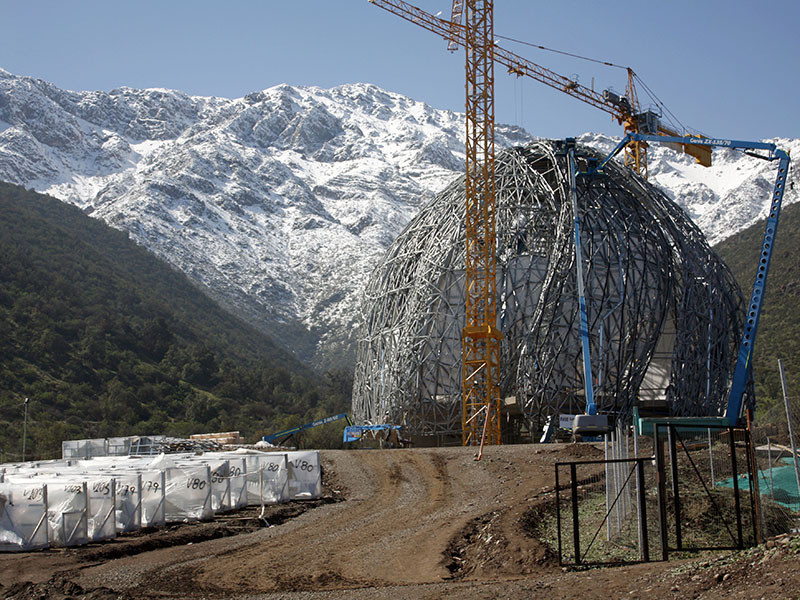
Now nearing completion just outside Santiago, Hariri Pontarini Architects’ Bahá’í Temple of South America is currently one of the most significant religious construction projects in the world. In this article, originally published by Metropolis Magazine as “Sacred Structure,” Guy Horton relates how – despite being in progress for almost a decade already – the design has changed remarkably little from the initial design sketch, using the latest technology to create a spiritual and emotional space.
哈里裡·蓬塔里尼建築師事務所的南美巴哈伊神廟現已在聖地亞哥郊外完成,目前是世界上最重要的宗教建築項目之一。 在最初由《大都會雜誌》(Metropolis Magazine)發行為“神聖結構”的文章中,蓋伊·霍頓(Guy Horton)講述了儘管已進行了將近十年的設計,但與最初的設計草圖相比,設計已經發生了顯著變化,使用最新的技術創造了一種精神 和情感空間。
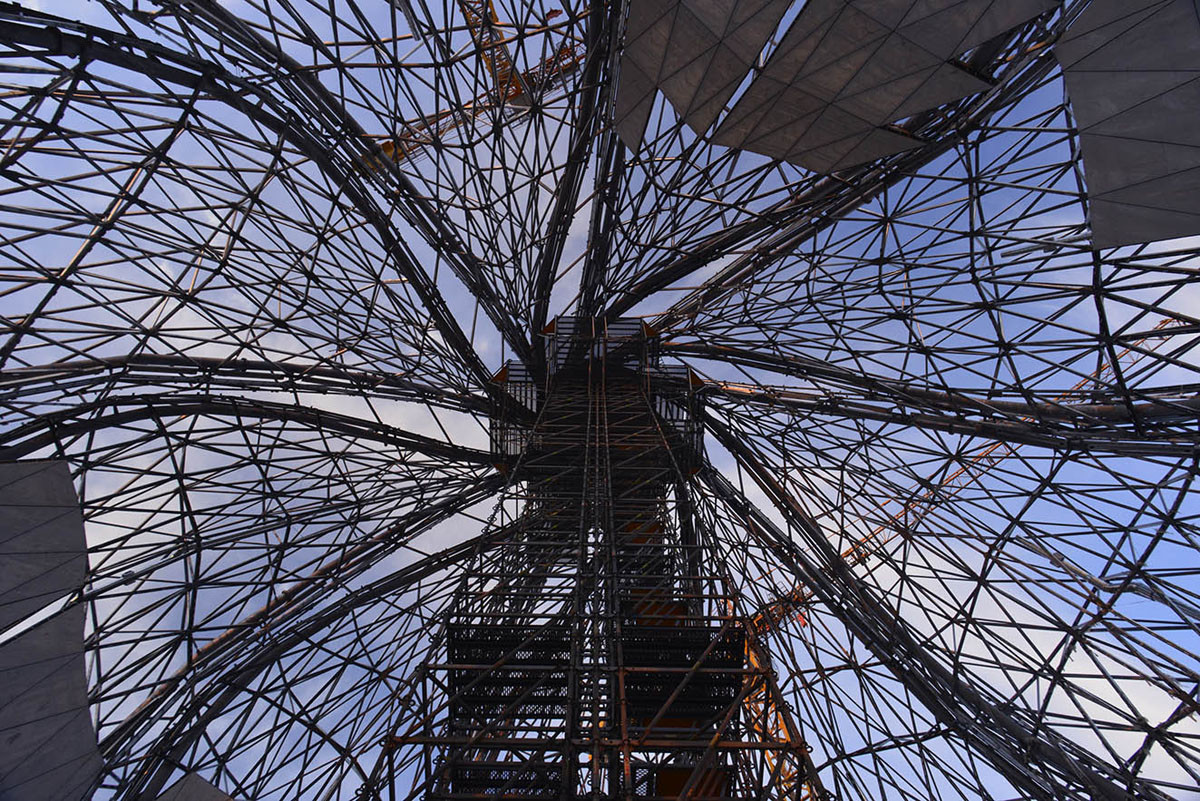
For the last few years, in the Andean foothills just outside Santiago, Chile, a mysterious orb-like structure has been slowly rising under construction cranes. The new Bahá’i Temple of South America will be the first of its kind on the continent when it opens in 2016. It has been a historic journey for the Bahá’i faith in this part of the world—Bahá’i first arrived in Chile in 1919—and a patient journey for the architects, engineers, and builders who have brought the temple to life through a decade-long process of innovation.
在過去的幾年中,在智利聖地亞哥郊外的安第斯山麓地區,一個神秘的類似球體的建築正在起重機的抬頭下緩慢上升。 新的南美巴哈伊神廟將於2016年開放,將是非洲大陸上首個此類神廟。這是巴哈伊信仰在世界這一地區的歷史性旅程,巴哈伊首次來到這裡 1919年的智利,以及經過十年的創新過程使這座寺廟栩栩如生的建築師,工程師和建築商們耐心地經歷了一段旅程。
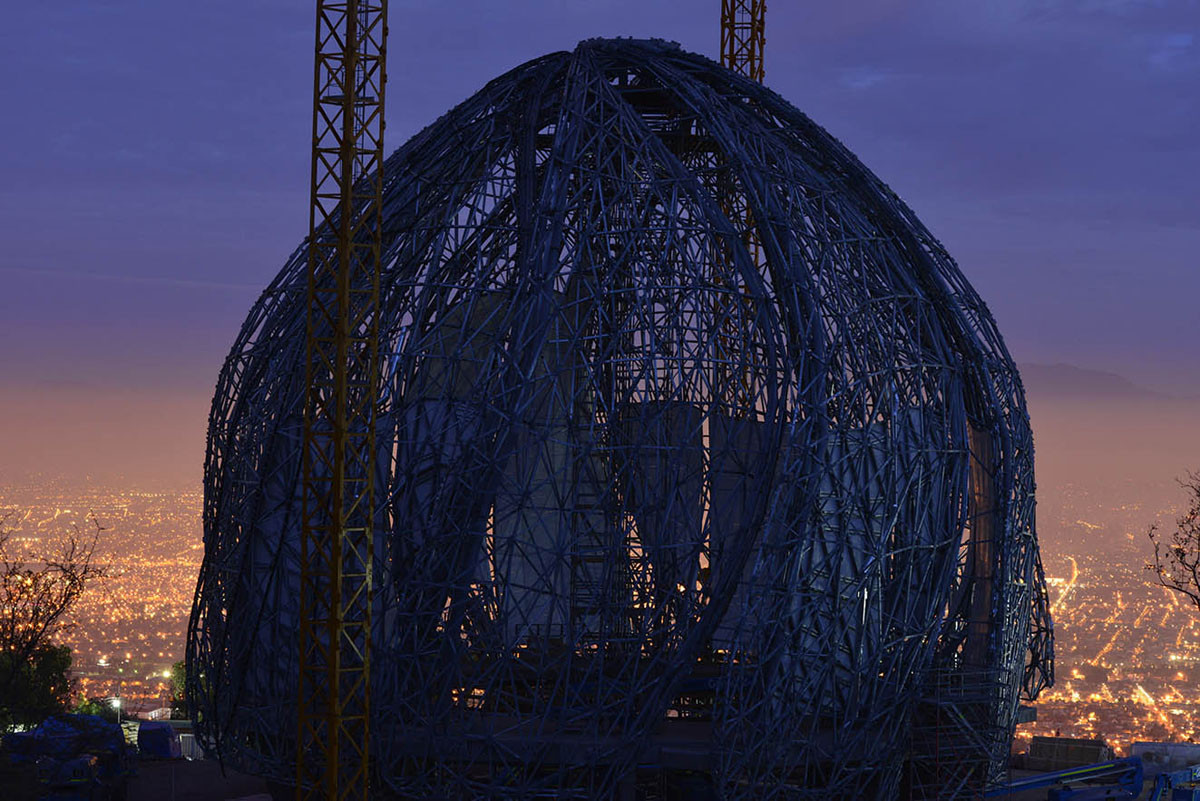
Designed by Canadian architect Siamak Hariri and his Toronto-based firm Hariri Pontarini Architects, the temple takes its inspiration from the Bahá’i conception of light as a symbol of unity. In addition, following Bahá’i scripture, the building was required to have nine entrances—welcoming all who come from all directions—and a dome to let in light.
該寺廟由加拿大建築師Siamak Hariri和他的多倫多公司Hariri Pontarini Architects設計,其靈感來自巴哈伊以光為一體的觀念。 此外,按照巴哈伊的經典,這座建築必須有9個入口-歡迎所有方向的人進入-並有一個圓頂可以照亮。
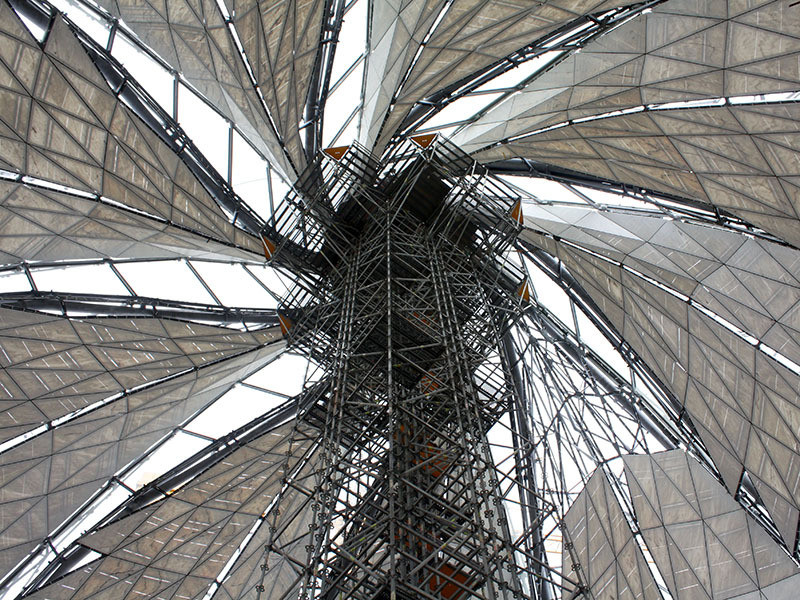
Going in an entirely unexpected direction, the architects created a form made up of nine “sails” that twist, bend, and curve as they reach up to join an “oculus” at the apex. In the harsh Andean terrain, the building appears to billow and coil lightly as it emerges from its heavy concrete base. The architectural language —achieved in partnership with U.S. engineering firm Simpson Gumpertz & Heger (SGH) and Germany-based Gartner Steel and Glass GmbH—is at once high-tech and organic, combining digital design and fabrication technologies with the personal sensitivity of craft and the rough imperfections of nature.
在完全出乎意料的方向上,建築師創造了一種由九個“風帆”組成的形式,這些風帆在到達頂點時會扭曲,彎曲和彎曲。 在崎And的安第斯山脈地形中,建築物從沉重的混凝土基座中冒出來時似乎會翻滾並輕微彎曲。 與美國工程公司Simpson Gumpertz&Heger(SGH)和德國的Gartner Steel and Glass GmbH合作實現的建築語言既是高科技又是有機的,將數字設計和製造技術與工藝和工藝的個人敏感性相結合。 大自然的不完美之處。
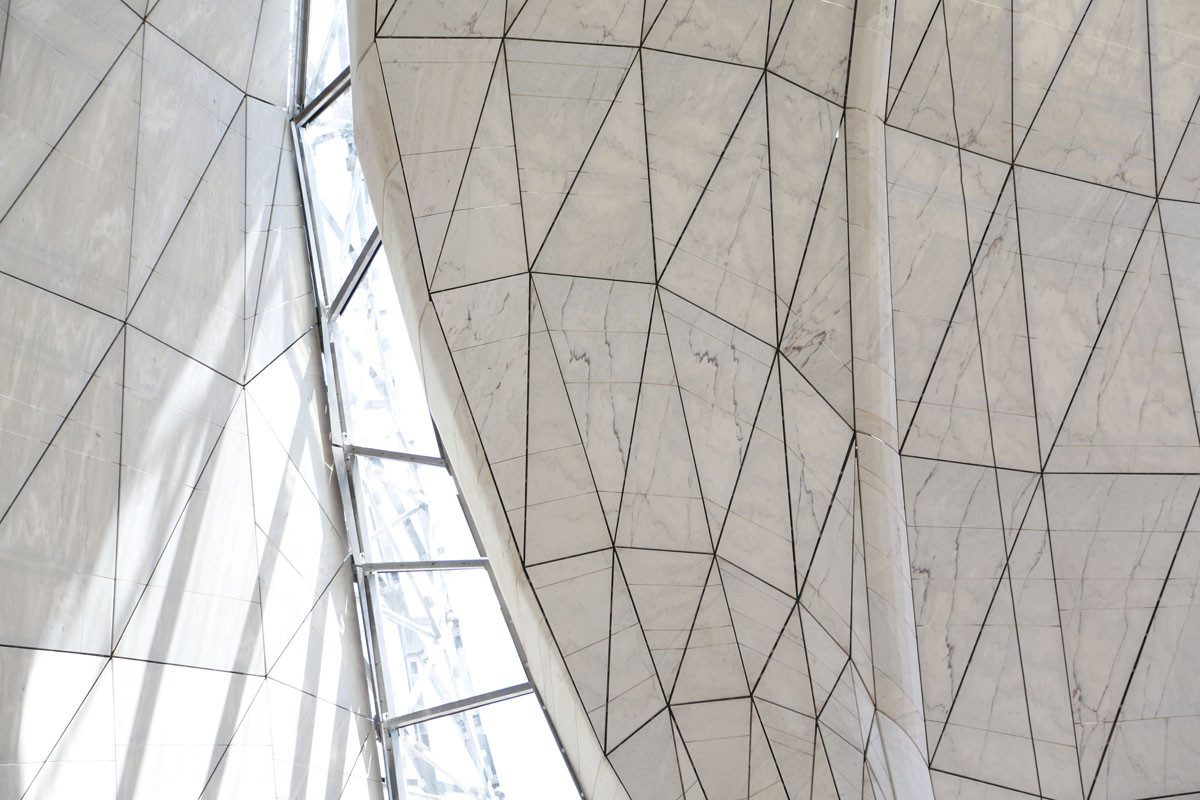
“We wanted the building to be about light, but with a more special, ancient quality to it,” says project manager and associate-in-charge Doron Meinhard. “We knew we had to do something special because this building was intended to be a 1,000-year project,” he adds. The “sails” are the embodiment of this approach, maintaining the organic character of the original competition-winning design. It could have been a simplified structural and cladding solution made with off-the-shelf components, but the architects and engineers allowed complexity to thrive—expressed in water jet-cut cast glass on the exterior and translucent marble panels on the interior. These two translucent layers follow an intricately webbed space frame structure connected with custom nodes. “These nodes are the DNA of the project,” says Meinhard. They allow the glass and marble to achieve a high tolerance of connection right up to the space frame, following the shape closely without gaps. The only concession to simplification was making each “sail” identical and repeating it nine times. “A repetition factor of nine was good enough,” says Meinhard. “We wanted to keep the standards very high.”
“我們希望建築物要輕巧,但要具有更特殊的古老品質,”項目經理兼負責人Doron Meinhard說。他補充說:“我們知道我們必須做些特別的事情,因為這座建築原本打算成為一個具有1000年曆史的項目。” “風帆”是這種方法的體現,保持了最初贏得比賽的設計的有機特徵。它本可以是由現成的組件製成的簡化的結構和覆層解決方案,但是建築師和工程師允許複雜性得以蓬勃發展-在外部的水射流切割鑄造玻璃和內部的半透明大理石面板中表現出來。這兩個半透明層遵循與自定義節點連接的複雜的網狀空間框架結構。 “這些節點是項目的DNA,” Meinhard說。它們可以使玻璃和大理石達到與空間框架的高度連接公差,並緊緊跟隨形狀而沒有間隙。簡化的唯一讓步是使每個“帆”相同,並重複九次。 “重複係數為9就足夠了,” Meinhard說。 “我們希望保持很高的標準。”
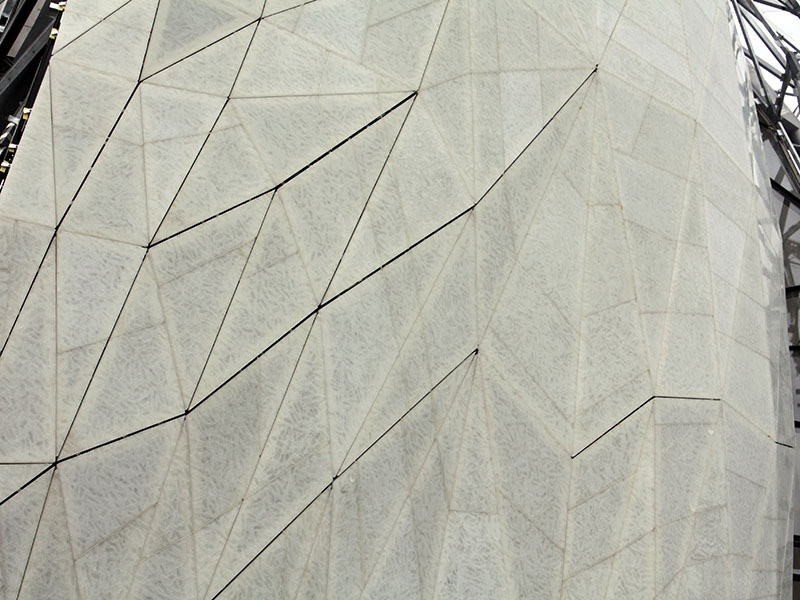
The design team also stayed away from typical annealed or plate glass, going instead for something that looked and felt more like stone, but still had the visual properties of glass. This ultimately led to a four-year collaborative research process with Canadian glass artist Jeff Goodman. Known for his work with ornate blown glass, Goodman created the original prototype for the custom 1.5-inch-thick patterned glass panels that clad the building. The patterning takes its cues from the work of the American artist Mark Tobey, specifically his “white writing” or “structured light” paintings inspired by Chinese calligraphy and his conversion to the Bahá’i faith early in his career. But there is more to the glass than just the way it looks. Significant temperature swings every day of the year posed expansion and contraction challenges to using typical glass. “We did a lot of testing on the glass,” says Frank Kan, principal at SGH. “This type of cast glass, also known as Pyrex, has less thermal expansion.”
設計團隊還遠離了典型的退火玻璃或平板玻璃,取而代之的是看起來和感覺更像石頭的東西,但仍然具有玻璃的視覺特性。這最終導致與加拿大玻璃藝術家Jeff Goodman進行了為期四年的合作研究過程。古德曼以華麗的吹製玻璃作品而著稱,他為覆蓋建築物的1.5英寸厚的定製圖案玻璃板創造了原始原型。圖案的靈感來自美國藝術家馬克·托比(Mark Tobey)的作品,特別是他的“白寫”或“結構化的”繪畫受到中國書法的啟發,並在其職業生涯早期轉化為巴哈伊信仰。但是玻璃不僅具有外觀,還具有更多的功能。一年中的每一天都有明顯的溫度波動,這給使用典型玻璃帶來了膨脹和收縮的挑戰。 “我們在玻璃上做了很多測試,” SGH負責人Frank Kan說。 “這種類型的鑄玻璃,也稱為派熱克斯玻璃,熱膨脹較小。”
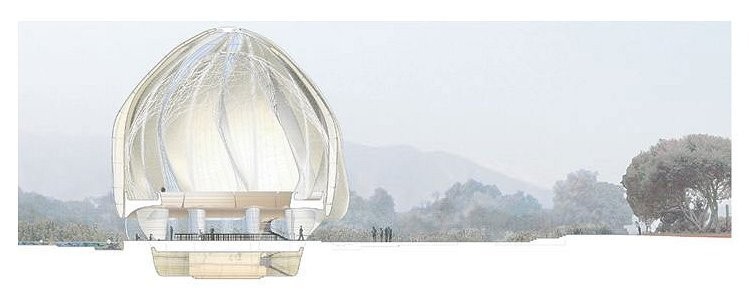
The whole system was rationalized using CATIA software, but in a way that stayed true to the concept. The final pieces of cladding are now being hoisted, positioned, and fixed into place for a building that defies rational thought and veers into the realm of the emotional.
整個系統使用CATIA軟件進行了合理化處理,但仍符合該概念。 現在,最後的覆層被吊起,定位並固定到一棟建築中,該建築違背了理性的思想,並轉向情感領域。
FROM:https://www.archdaily.com/769348/how-chiles-bahai-temple-uses-high-technology-to-create-a-spiritual-space、https://en.wikipedia.org/wiki/Santiago_Bah%C3%A1%27%C3%AD_Temple
Don’t you think it’s addictive?
Want to know more about the beauty of architecture?
Come and join our members to explore the beauty of architectural design.
覺得看得不過癮嗎?
想要知道更多建築之美嗎?
快來加入我們的會員,一同探索建築設計之美。
The above article is purely for appreciation and sharing purposes, as well as the construction of new technology and the public can be in-depth understanding of the information at the same time there are sources, will be able to query, no use of the document as a commercial transaction, if illegal, please inform the We will immediately remove the site, thank you for cooperation.
以上文章純粹作為欣賞及分享用途,以及將建築新型技術傳遞給與大眾能夠深入了解,同時資料還有來源,將可查詢,絕無使用該文件資料作為商業交易行為,如有違法請務必告知該網站我們將立即處理撤除,謝謝合作。

